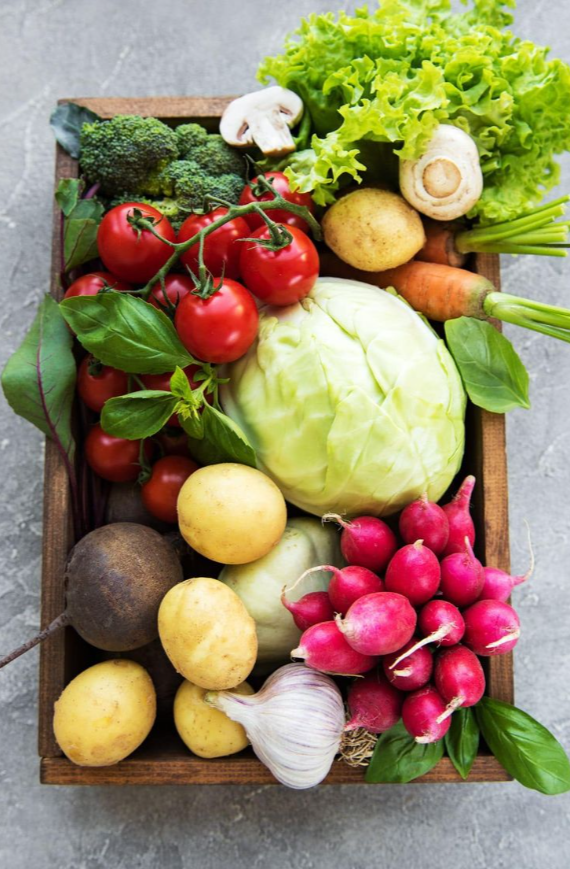🧺A Real-Life Example from Our Farm
CSA. Three letters, one powerful idea.
Community Supported Agriculture isn’t just a buzzword — it’s a philosophy. It’s about growing food with heart and delivering it directly to the people who care about where their food comes from.
When we started our CSA journey, we had just a handful of subscribers and a single box each week. Today, we pack dozens of boxes for loyal members who call it their “weekly dose of green happiness.”
In this post, we’ll break down what makes a great CSA box, how we plan and pack ours every week, and what farmers and customers alike can learn from our experience.
What Is CSA and Why Does It Work?
In a CSA model, customers pay in advance for a share of the farm’s harvest, and in return, they receive a weekly (or biweekly) box of fresh, seasonal produce.
For customers, that means:
- fresher, tastier food;
- a connection with the farm and grower;
- knowing exactly where their food comes from;
- becoming part of a local food movement.
For farmers, it means:
- a reliable income stream;
- reduced risk and less waste;
- ber relationships with their community;
- more time growing and less time hustling.
What Makes a CSA Box “Perfect”?
After years of testing and tweaking, we found a simple truth:
The best CSA box is balanced, useful, seasonal, and just a little bit surprising.
It should be:
- nutritious;
- versatile;
- family- and single-friendly;
- easy to cook with;
- and exciting to open each week.
What’s in Our Weekly CSA Box: A Real Example
Here’s a sample mid-summer CSA box from our farm (June–July season):
1. 🥬 The Base: Greens and Salad Staples
Every box starts with:
- 1 bag of salad mix (150–200g)
- 1 bunch of spinach, Swiss chard, or kale (rotates weekly)
They’re the foundation of quick meals — salads, smoothies, sautéed greens.
2. 🍅 Snack-Ready Favorites
- 300g of cherry or slicing tomatoes
- 2–3 sweet bell peppers (or hot, if noted)
- cucumbers (in season)
These are “no-cook-needed” produce items — great for snacking, kids, and busy people.
3. 🥕 Root Veggies
- 1 bunch of carrots (with greens — for visual appeal and smoothies)
- beets or radishes (depending on the week)
Roots are essential for stews, sides, and roasting. They last well and ground the box.
4. 🌿 Herbs & Microgreens
- 1 tray or bag of microgreens (radish, pea, or broccoli)
- 1 bunch of herbs (parsley, basil, dill)
A little flavor goes a long way — and microgreens add a gourmet touch.
5. 🥔 Hearty Vegetables (Biweekly)
Every two or three weeks, we include something heavier:
- potatoes, squash, zucchini, or sweet corn.
These add substance and variety, and often inspire home-cooked meals.
6. 🍓 Fruit or Sweet Bonus
If we have it, we add:
- strawberries or apples (in season)
- a small jar of jam or dried fruit
- honey or a treat from the farm kitchen
It’s our way of saying, “Thanks for being here.”
7. 📃 Recipe or Weekly Inspiration Card
Each box includes a little something extra:
- “Zero-waste carrot salad (yes, with the tops!)”
- “Spinach beet smoothie”
- “Farm-to-fork pasta with tomatoes and greens”
Our members tell us they love these — many collect the cards for their fridge.
How We Pack Our Boxes Without Chaos
The key? A weekly rhythm and checklist.
Here’s what our CSA week looks like:
| Day | Task |
|---|---|
| Monday | Finalize box contents, check inventory |
| Tuesday | Prep boxes, print recipe cards |
| Wednesday | Harvest and pack |
| Thursday | Deliver or set up pickup |
This repeatable flow keeps us sane and consistent, even on busy harvest weeks.
Common Questions from CSA Customers
❓ “What if I don’t know how to use something in my box?”
That’s what the recipe card is for! We keep things simple and seasonal, plus we include ideas in our weekly email.
❓ “What if I’m out of town?”
Options include:
- gifting your box to a friend or neighbor;
- skipping the week and extending your share;
- trading for a pantry item or frozen goods.
❓ “Can I customize my box?”
We follow a “farmer’s choice” model, but we allow light swapping:
“Hate beets? Let us know — we’ll swap them for carrots.”
5 Tips for Farmers Starting Their Own CSA
If you’re thinking of launching a CSA, here’s what we’ve learned:
- Start small – even 5–10 subscribers is enough to learn and grow.
- Design your logistics – how will you pack, store, and deliver?
- Communicate clearly – emails, checklists, and updates build trust.
- Make it visual – people love box photos on social media.
- Add a personal touch – a note, recipe, or bonus item goes a long way.
CSA Is More Than a Box — It’s a Relationship
Over time, we’ve realized our CSA isn’t about selling veggies. It’s about growing relationships.
We know our members by name.
They text us food photos and thank-you notes.
They send messages when they miss a week, just to say they’re thinking of us.
That’s what a CSA is all about — connection.
Final Thoughts
A perfect CSA box doesn’t try to be everything — it tries to be useful, joyful, and seasonal.
It should give people confidence in their food and delight in their week.
If you’re a farmer, start with one box.
If you’re a customer, subscribe for a month.
It just might change how you eat — and how you think about food.

